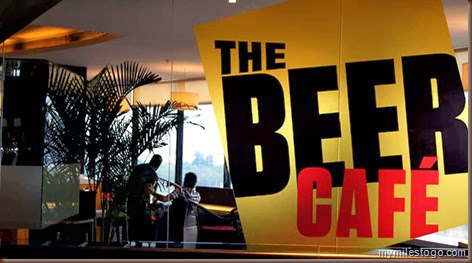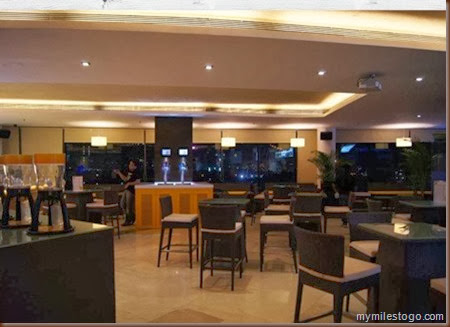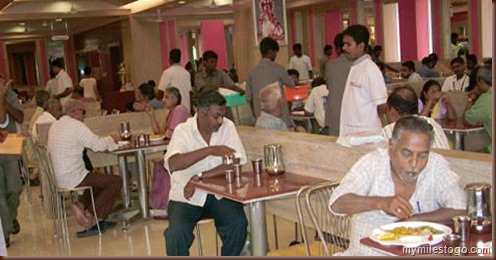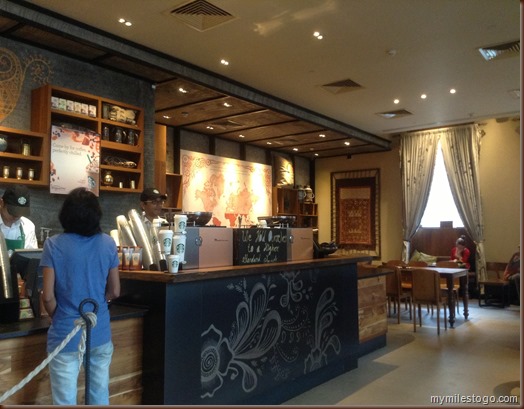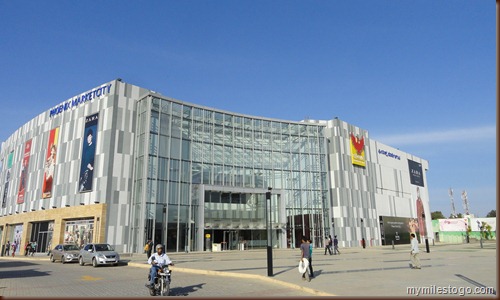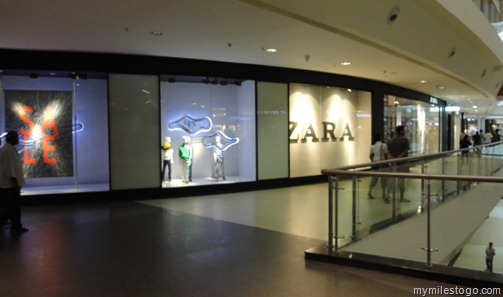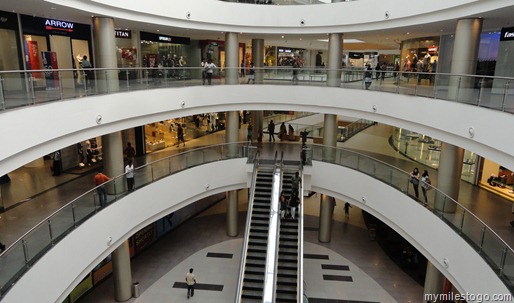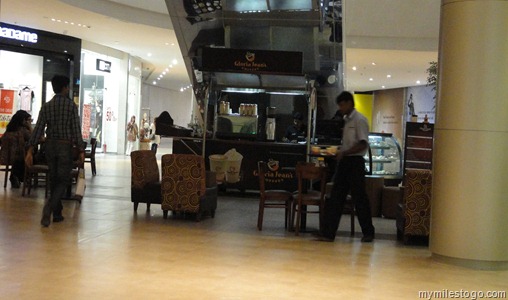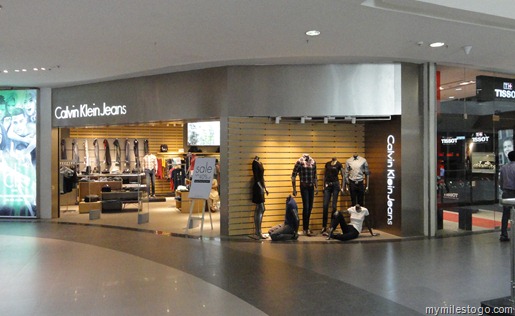As I write this article, Gloria Jeans is making a comeback, CCD is about to get a new Investor cum Owner and a few interesting brands are scaling. Exciting space ahead. So I can write more interesting stuff about my favourite beverage, more often.
25 December, 2019
The Café boom – Retail 2020 (Article #4)
As I write this article, Gloria Jeans is making a comeback, CCD is about to get a new Investor cum Owner and a few interesting brands are scaling. Exciting space ahead. So I can write more interesting stuff about my favourite beverage, more often.
21 November, 2013
Brewing Cheer with Beer!
I recently happened to meet Rahul Singh, Founder and CEO of “The Beer Café”, an upcoming chain in Delhi NCR, based out of Gurgaon. Rahul comes across as an affable person, having spent over 20 years in the Indian Retail Industry. Before turning entrepreneur, Rahul was working for Reebok as Executive Director and was responsible for sourcing apparel for domestic as well as export markets. An electrifying guy, Rahul seems to have a natural flair for entrepreneurship. It was a chance meeting to discuss a business proposition but turned out to be a very engaging 90 minutes one on one. Prior to The Beer Café, Rahul was responsible for creating the first ever indoor Golf centre along with F&B and Entertainment at Gurgaon, at the upscale Ambience Mall.
I couldn’t resist but to ask Rahul how many months did he take to come up with the idea of a Beer only place. He was quick to retort saying that it took him just two months! I loved the way he simplified his method of narrowing down the concept. According to Rahul, there are three broad categories in the F&B Business – Fine Dine, Quick Service and Fast Food. He chose the Fast Food model. Within that, there were two options – to focus on food or beverage and he chose the latter. And within Beverages (read Coffee Café chains like Café Coffee Day, Barista, Costa Coffee, Gloria Jeans and Starbucks which have more than 2,000 cafes in India), he chose cold beverages and that’s how the idea of Beer Café was born. Simple idea that relies on classy execution.
Rahul wants his chain to be the CCD of beer and conversations. Alcohol frees up the mind and the soul and today, one has fewer choices to consume a pint of beer, either at a restaurant or at a Pub (home parties are a limited choice though). So, he wanted to set-up Beer Cafes in convenient locations where people could drop by with their friends or colleagues at work for a quick chat or a relaxed conversation.
The Beer Café now has over 11 locations within Delhi/NCR and would have about 30 operational outlets within the next three months! With VC funding coming in, Rahul hopes to grow the café network substantially over the next couple of months. His only gripe: Real estate costs of First World with consumer spends of Third World. Every Retailer would agree to this quote. Operating Costs, especially store rentals are extremely high and staff attrition is another big challenge. Rahul is now looking for an able COO to run the business, so he could take a bigger role in managing Strategy and Expansion.
The café is very appealing, with bright lights and a friendly attitude of staff. On a weekday evening when I passed by at the Beer Café at the Ambience Mall at Gurgaon, there were many who were having a good time seemingly. And many more would be in times to come.
30 April, 2013
The Third Place just got costlier!
On Monday, 29th April 2013, The Tamil Nadu Hotels Association (TNHA) observed a one-day strike to protest against the Central Government’s decision to impose Service Tax on their businesses. Speaking to the media, TNHA President M. Venkadasubbu said, “The TNHA had taken the lead to organise similar associations in all states in this regard and a federation, the Federation of Hotel Associations, had also been formed for the first time in the country.The announcement of Service Tax was made by India’s Union Finance Minister Mr. P Chidambaram in the Union budget and had already come into effect, beginning this month… (April 2013). The Service Tax of 12.36 per cent levied out of the 40 per cent of the sales proceeds is illegal and a big burden on consumers who are already forced to bear the brunt of price escalation due to inflation. While the hotels and restaurants were already paying VAT ranging from 2 to 14 per cent, the new Service Tax levied by the Central government would amount to double taxation,” he said. ‘This problem of double taxation was discussed at a meeting organised by the Federation of Hotel Associations (comprising office bearers and representatives of hotel associations from all states) in Mumbai last week and a unanimous decision was taken to launch a nationwide bandh if the Central government did not roll back the Service Tax.’
Eating out has become extremely expensive over the past decade. I remember, when I was in Graduate School, with pocket money of less than Rs. 300/- per month, we could meet most of our out-of-home expenses including filling fuel for our bikes. Not so these days. The purpose of having a meal outside home, The Third Place as it is called is not just eating. It’s all about building camaraderie and relationship/bonding with family and friends. Ray Oldenberg defined the third place as an alternative to Home and Workplace in his research paper in 1991. Oldenburg calls one's "first place" the home and those that one lives with. The "second place" is the workplace — where people may actually spend most of their time. Third places, then, are "anchors" of community life and facilitate and foster broader, more creative interaction.There were already numerous such spaces all over the world. Cafes, Restaurants and other Eating Spots are among the most sought after third-places. In India, cafes and eateries have burgeoned all over the country in the past few years. Café Coffee Day, India’s largest café chain has over 1,400 cafes across the country. Starbucks, Costa, Coffee Bean and Tea Leaf, Gloria Jeans, Mocha and many other such international and domestic café chains have their outlets spread across major cities, providing an opportunity to people to hang around and discuss everything under the sun – from personal banters to professional meetings to matrimonial discussions, one can find all of those out there. Apart from Coffee Shops, there are over half a million eateries of various shapes and sizes across the country which provide Food & Beverage options. For nuclear families, eating out is one of the biggest entertainment these days, what with very little time to spend with the family!
With the proposed new tax, food bills are expected to go up significantly to consumers. For example, on a bill of say, Rs. 1,000/- for a family of four, the Value Added Tax ranges from 2-14%, so lets assume its on an average of 8%. So, the bill goes up to Rs. 1,080/-. The service tax of 12.36% is applicable on 40% of the Sales, so that works out to Rs. 49.44, rounded off to Rs. 50/-. Hence the total bill to consumer now is Rs. 1,130/- just because this family chose to eat in an air-conditioned restaurant…where such a tax is applicable. The definition is quite clear – whether serving F&B in an air-conditioned area is a sale or a service. As per the recent amendment in the Law, its both. While food is cooked and sold, it is also served (by waiters) and hence considered a service. Also, the a/c facility is meant for seating and consumption, thereby making it amply clear that it is indeed a service. While this rule will bring about encouraging revenues to the Government, those that are meant to suffer are the middle-class consumers. For students and youngsters, visiting their favourite coffee shop or a fast food joint would get more expensive, thereby creating a dent on their pocket money. However, for the affluent and well to do, the proposed hike may not mean much, given that their spending power is relatively higher. In most cases, such individuals / families don’t even check the bill – probably pay (usually by a credit card) and sign-off.
While inflation and cost of consumption have gone up significantly, the income rates haven’t gone up proportionately. This has left the middle-class with fewer options for recreation. And Eating joints may not be the most preferred Third-Places anymore! For F&B Retailers, it means reduced number of visitors. And business too.
07 April, 2012
Music can convert more customers!
I asked him, “are there people in your store who have had a love-failure"??” and obviously he was confused. He called for his supervisor and I repeated my question. Both of them gave me a warm smile and declined that there wasn’t anything of that sort. So, why play such boring music of love-songs at a Hair Salon post noon?!? I quipped. He was quick to change the music and I told him that it wasn’t for me but for his employees too. This incident happened recently at a hair salon when I was out for my monthly activity. I have been a firm believer that “air play” or the music that you play at your retail store, irrespective of its format has an impact on the customers and their tendency to shop/consume more. And there is no standard laundry list of what kind of songs to be played across formats – these are learned over time and are specific to the history (of customer behaviour) and the geography (of the store’s location).
A salon must be playing peppy songs most often. As it is, a hair cut or a similar activity is a reasonably boring one (and I specifically refer it only to men) while women seem to focus more on the job being done. The staff must be happy and cheerful all the time – after all, they promise to change the way one looks and this is an important thing that most Senior Managements at Retail companies give a miss. While they focus on clean and hygienic environments (which is a must in a salon), things such as mood-lighting and sound (read: music) is often ignored, though not intentionally. It could be different for various services within a Salon. For Ex., the music to be played while a hair-cut is being undertaken could be significantly different than when, say a body massage is being given. I was a month ago, outing at a Kerala Ayurvedic Massage centre, its more of a therapy than just a massage, I would say and to my surprise, there was no music! The whole place was smelling of essential oils, which seem to be suffocating at some stage. I did share my feedback with their front-office and they gave a lame reason – that the speaker wasn’t working. Hope these things get corrected.
For my new born child, I was looking for a cradle and visited many stores that stocked “Baby Products” in Chennai. Not one was playing music! They could easily be selling music CDs and DVDs for kids of various age – though these are low-margin, low-value items, they increase the basket size without much effort. Mom and Me, the baby products and maternity store operated by Mahindra Retail was playing a DVD on their LCD screen which was located 15 feet above the ground. One had to look up all the way to see what was going on. Ofcourse, it was better to play something than nothing, I felt.
Saravana Stores, a regional Retailer based out of Chennai which has one of the highest footfalls into their million square feet stores recently was playing “Jam” by Michael Jackson, while most of their customers wouldn’t have even known the pop icon. India’s largest Hypermarket Retailer Big Bazaar had sometime ago tied up with a Radio station with national presence but which plays regional songs. Makes sense. Retailers need to talk the same language as the customer and create the mood for consuming more. Cafes and eateries such as Café Coffee Day, Gloria Jeans, Pizza hut, etc. typically play the latest hits while a fine-dine restaurant plays mellow music, usually instrumental such as a piano or piped instrument. Pubs and Bars, as always play music that is so loud that patrons have to speak at the top of their voice to be heard. Grocery stores may choose to play local music but not something that is very jazzy! Department Stores and Malls too play soft music most often. The moments of truth, irrespective of the retailer’s origin or market remains the same.
The power of air play is huge. Few Retailers have realised and used it well. Hope to see many more use them smartly – afterall, good music can aid in higher conversions!
19 February, 2012
Phoenix Market City–Everything for Everyone!
Yet another mall opened its doors recently in Bangalore – this time in the far eastern limits of Bangalore, near Whitefield. After a successful launch at Pune and Mumbai, the Mumbai-based Phoenix Mall Management has launched their prestigious project in Bangalore. This is the largest mall in town with an estimated 1.80 million square feet of space – a multi-development concept and one of its kind in the city that also includes a half a million square feet of office space, a 5 Star hotel with 236 rooms, a service apartment with 174 rooms and a multiplex spread over 55,000 sq ft. The external beauty lies in the fact that it is horizontally spread than vertically – all of four floors and a lower ground which connects directly to the most spacious parking lot which is well spread and brightly lit. The construction architecture is minimalistic with no jazz – focus is on the Retail Stores than crazy designs and confusing walkways. This mall also launched for the first time in Bangalore, marquee brands such as Zara, the Spanish fast-fashion retail chain in a JV with the Tatas (Also Read: Starbucks India – a TATA Alliance), Calvin Klein, Gant and California Pizza Kitchen. The main anchors include Big Bazaar, India’s largest Grocery and Homewear Hypermarket chain, MAX Hypermarkets, Reliance Trends, Reliance Digital and Reliance Time-Out. Regular Mall names such as Benetton, Tommy, Fab-India, Titan, Louis Philippe, Arrow are present while a few such as Café Coffee Day, Barista are conspicuously missing!
The best thing about the mall is that it has everything – for the first time, multiple entrances – from the main entry gate, from the sides (Drop-off area), and from the basement parking area. The Ground Floor (entry level) is rather wide and broad – spacious enough to make it appear like a premium mall. Tommy, Gant and Zara welcome visitors with their bright signages and show-windows. Once inside, the shopper gets to see the wide expanse through well thought out and planned cut-off areas – from one floor, there is ample visibility to other floors.
The anchors are also well spread. Big Bazaar is closer to the Parking Area so it would be easier for customers to take their shopping trolleys to their vehicles; however one needs to walk almost half a mile to the main road if they don’t have a personal transportation – an area that must have been given thought to. Max Hypermarkets welcome you once the shopper enters from the lower basement. Pantaloon Fashion store is placed in the upper floor while Reliance Digital (the Electronics Store) is in the lower basement too. There is a small gifts shop – all of 400 sq ft which is packed with curious onlookers for all the fancy cheap Chinese imports that the store has. The Foodcourt is as always, on the top floor nearer to the Cinema Halls while the Gloria Jeans coffee shop is sadly placed beneath an escalator with sparsely spread out seats – some wooden and some sofa seating in some random manner! Obviously, the café doesn’t commensurate its great coffee with its ambience. The other coffee shop, Costa is placed on the top floor – some logic I guess!
I walked for over an hour, before understanding the layouts and placements, familiarizing myself – I scored lesser marks in my own purview although I wonder if shoppers would get to know it even after as many as 3-4 visits. Zoning, which I know personally had taken many months with inputs from some fabulous international consultants is to say the least, sad. Maintenance costs would be sky high I guess – air-conditioning such a wide area with two dozen security guards for over 14 hours a day is not going to be cheap or easy. The escalators – onward and downward are placed next to each other thereby not diverting traffic in various directions. Signages- although we don’t read as much – are scarce.
Overall, this Mall has tried to become everything to everyone – a premium mall in one-fourth of its space and a normal neigbourhood shopping centre with the rest. While Big Bazaar and Max are expected to draw a different set of clientele than, say a Zara or Gant, they are placed far behind – from a real estate point of view, this probably makes sense. But just that. Most people who intend to shop at a Hypermarket would be passing through premium retail stores – not only would they find it out of place but also a bit weird. Also, the Hypermarkets, whose predominant customer base are those who depend on autos and two-wheelers would find it taxing to come and shop here. And btw, Big Bazaar has its store close by – within a 3 km distance to be precise. Other than being a show piece, I wonder if they have any other reason to be here. And for the customers of premium Branded Retail stores – the car parking areas are just too far away. Wonder if that would put them off. Except if they have specifically come to shop at, say the iconic Calvin Klein.
Firstly, does Bangalore need such a large Mall? With congested roads and consistently heavy traffic not just at the CBD but almost everywhere in the city, what we need are a number of neighbourhood malls – within a 4-5 sq km radius and within a 15-20 minute drive. And this everything under one roof doesn’t work as much. Bangalore, or most Indian cities do not attract a huge tourist population such as Dubai or Singapore. Nor are our prices globally competitive, rather more expensive. The semi-urban crowd that comes to the larger metros and cities rather stick to traditional shopping areas (Read: Downtown shopping centres, predominantly the semi-organized retail stores). The Mall also needs to attract 3-4 times what the best Mall in town attracts today – to support the single-digit conversions at its stores. For a Mall that is located so far off, it is anybody’s guess if the Mall or its tenants would do well in the first few years. Maybe over 3-4 years, the location would attract some traction.
Needless to say, the group has invested significantly and so have the Retailers. Here’s wishing them good luck in times to come.
A Firefly finally takes off
Monday - 22 Jan. ‘24 is a very important day in my professional life. I complete eight months today in my role as Executive Vice President a...

-
12 December is celebrated annually as Retail Employees Day, an occasion to thank the frontend staff who have taken up Retail as their pref...
-
The world is split into two for the last week or so, ever since India’s self-made billionaire and tech mogul Mr. Narayana Murthy (NRN) said ...
-
It’s been over 5 months since I wrote anything on this blog, especially. Not that I didn’t have anything to observe, even better to share my...




